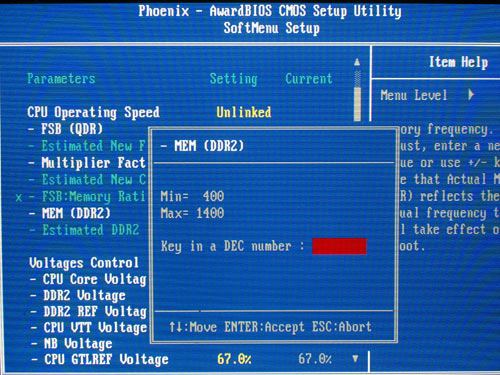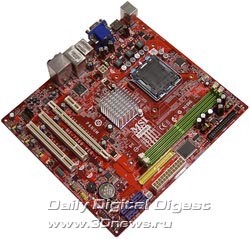All you need to know about your products!

| 3DNews Vendor Reference English Resource - All you need to know about your products! |
||||||
 |
||||||
|
|
||||||
abit I-N73HD and MSI P6NGM (NVIDIA GeForce 71хх)Author:Date: 15/05/2008
The release of the AMD 780G chipset has substantially changed the shares distribution on the market of integrated motherboards. The superb functionality and high performance in 3D applications almost leaves no chances for competitors in the sector of products priced at ~$80. Therefore, today's tests of motherboards based on the NVIDIA GeForce 71xx series chipsets, to some extent, will be interesting only to those users who are after the Intel platform rather than speed at 3D applications. In particular, we'll be reviewing abit I-N73HD (GeForce 7100) and MSI P6NGM (GeForce 7150). Of special mention is the MSI board because the PCB of P6NGM was used by the company's engineers to develop a whole line of motherboards: P6NGM-L based on the nForce 7050 + nForce 610i combination, and P6NGM-FD (at that, there is still no precise info: either GeForce 7050 + nForce 630i, or GeForce 7100 + nForce 630i), and P6NGM-FIH GeForce 7150 + nForce 630i. We note that the P6NGM-FIH version is different from P6NGM in the lack of a Firewire controller. Once again, let's recall the specifications of NVIDIA GeForce 7ххх series chipsets.
Specifications 
Retail boxes  Package bundle
The package bundles of both the motherboards is almost identical 
 The differences are in that the abit board has a FDD cable, as well as a sticker with the layout of connectors and jumpers. On the MSI board, there are two CDs instead of one: one for Windows XP, the other one for Vista. On the whole, we found nothing to complain about the package bundles of the boards since they fully meet the level of value products. Layout and FeaturesBoth the motherboards are built on the Micro-ATX form factor, so they are of compact size. The abit board is a bit bigger.   Apart from the integrated graphic core GeForce 7150/7100, the boards allow for using an external video card installed into the PCI Express x16 slot.   The configuration of the remaining slots is identical for both the motherboards: each board uses two PCI slots and one PCI Express x16 slot. To cool the chipset, both the motherboards use only an aluminum radiator.   Both the motherboards have two 240-pin DIMM slots each for DDR2 memory modules, with the overall supported memory capacity being 4 GB.   The basic expansion options of motherboards based on GeForce 7150 and 7100 chipsets are absolutely identical because of the same nForce 630i south bridge. In particular, the chipset supports four SerialATA II links, with the option to arrange RAID arrays of levels 0, 1, 0+1, and 5. At the same time, there is support for one ParallelATA link.   Then, the motherboards support 10 USB 2.0 ports each. Four of them are installed on the rear panel, with 6 more ports connected through headers (missing in the package bundle). Besides, both the boards use a Firewire controller. On the abit board, that is the TSB43AB22A chip made by Texas Instruments, and on the MSI board - JMB381 by JMicron. Therefore, the boards offer support for 2 Firewire ports: one mounted on the rear panel, with the other one being additional (no bracket in the package bundle).   Also, the two boards implement the High Definition Audio subsystem, with the ALC888 chip is used as the codec.   Now a few words on the network support. The MSI board uses a high-speed network controller (Gigabit Ethernet) RTL8211BL made by Realtek, and abit - Marvell 88E1116: 
 The board's rear panel is of the following configuration:   Except the difference in positioning of the connectors layout, the functionality is almost the same. The only difference is in that the abit board has an optical SP-DIF. On the other hand, the MSI board supports one COM port, but it is implemented with a bracket (missing in the package bundle). Here is the traditional layout of the board:   Now on to the BIOS settings. BIOSThe BIOS of abit I-N73HD is based on the Award BIOS Phoenix version, with the BIOS of MSI P6NGM based on the AMI BIOS version.   In the respective subsection, the user can install the required memory latency timings:   By the way, the frequency of the memory can be set both automatically and manually. One of the advantages of NVIDIA chipsets is in that the memory frequency does not depend on the FSB speed.  Now look at the system monitoring section. In this regard, the capabilities of the abit board are much wider: the board is able detecting more temperatures, keeping track of the speed of a greater number of fans, and the FanEQ is more advanced than the standard SmartFAN in the MSI board.   System monitoring of the MSI board:  Besides, the boards allow the user to leverage all the technologies implemented in Intel's latest processors. At that, the abit board takes a lead:   Finally, we note the feature for controlling the memory capacity allocated for the needs of the graphic core:  In the BIOS of the MSI board, there is the respective option, however in this version of the firmware you can't change its value. Overclocking and stabilityThe PWM of abit I-N73HD is implemented following a 4-line scheme in which there are for 680 mkF, two 820 mkF, and five 1000 mkF capacitors. The power converter of MSI P6NGM has a 3-line scheme; used are eight 680 mkF and three 1000 mkF capacitors.   Now on to the overclocking features.  
We note the specific traits of the motherboards at overclocking. Above all, in case of unsuccessful setting of the parameters the boards hang up deadly and have no mode of the "emergency" start-up with the nominal settings. That is rather strange because the chipsets of the GeForce series support this feature. Another special trait of NVIDIA chipsets is implemented on both the motherboards. Namely, the memory frequency can be set both dependent and independent of the FSB speed:  Now let's look at the practical results of overclocking. The maximum stable FSB speed for the abit board is 390 MHz, and for the MSI board - 400 MHz:   In fact, the more powerful overclocking tools of the abit board don't work since we produced the worse result than that on the MSI board. In fact, the FSB=390 MHz can be regarded as quite good a result because it is higher than the result for Gigabyte 73UM-S2H and 73PVM-S2H (although for the half year engineers at Gigabyte must have optimized the BIOS and raised the overclocking capability of these products). Coming back to abit I-N73HD and MSI P6NGM, we note that none of them allows adjusting the frequency of the integrated video core. Performance testsIt turned out that while determining the starting FSB speed, the boards set it at a high enough precision.   In our test setup, we used the following hardware:
Let's first take a look at the results of synthetic benchmarks. For performance comparisons, we used the ECS board based on AMD 780G with a weak but cheap Athlon 64 3500+ processor.     Now on to the gaming benchmarks (performance in fps).      Tests of application software.
Video encoding (DivX, Xvid) was measured in seconds, i.e. the less the better.
 
Data compression (WinRAR) was measured in KB/sec, i.e. the more, the better.
 As you can see, we used a somehow cut-down set of applications since some games simply wouldn't start on NVIDIA 71xx chipsets, whereas application tests were executing too long. Final WordsAs we can see, even with the more powerful processor motherboards based on GeForce 71xx proved to be slower than those on AMD 780G. So, if the user needs performance in 3D applications, we recommend either wait for the GeForce 8xxx series or purchase the AMD platform on the 780G chipset. If the speed in 3D programs is not a critical factor, then abit I-N73HD and MSI P6NGM are quire acceptable basis for an inexpensive and multifunctional system. The choice between them is strongly complicated by the similarity of specifications. Almost everything is similar: the package bundle, the expansion options, as well as performance. There is a certain similarity in terms of overclocking as well - the difference in the maximum stable FSB speed proved to be no more than 10 MHz. At the same time, the best result proved to be with the MSI board, but the abit board offers a richer feature-set (i.e., higher capabilities). As regards the retail price, abit I-N73HD costs about $77, whereas MSI P6NGM is still unknown. On the other hand, we found the price for the P6NGM-FIH model (a modification without the Firewire controller) which costs at least $83. Therefore, P6NGM will be even more expensive, which makes it less attractive. However, the prices for motherboard change fast enough, and it is very difficult to keep track of the market situation permanently. So our advice to the reader is simple enough: choosing between abit I-N73HD and MSI P6NGM, but the cheapest one!  
Conclusion
- Discuss the material in the conference
|
||||||||||||||||||||||||||||||||||||||||||||||||||||||||||||||||||||||||||||||||||||||||||||||||||||||||||||||||||||||||||||||||||||||||||||||||||||||||||||||||||||||||||||||||||||||||||||||||||||
|
|||||